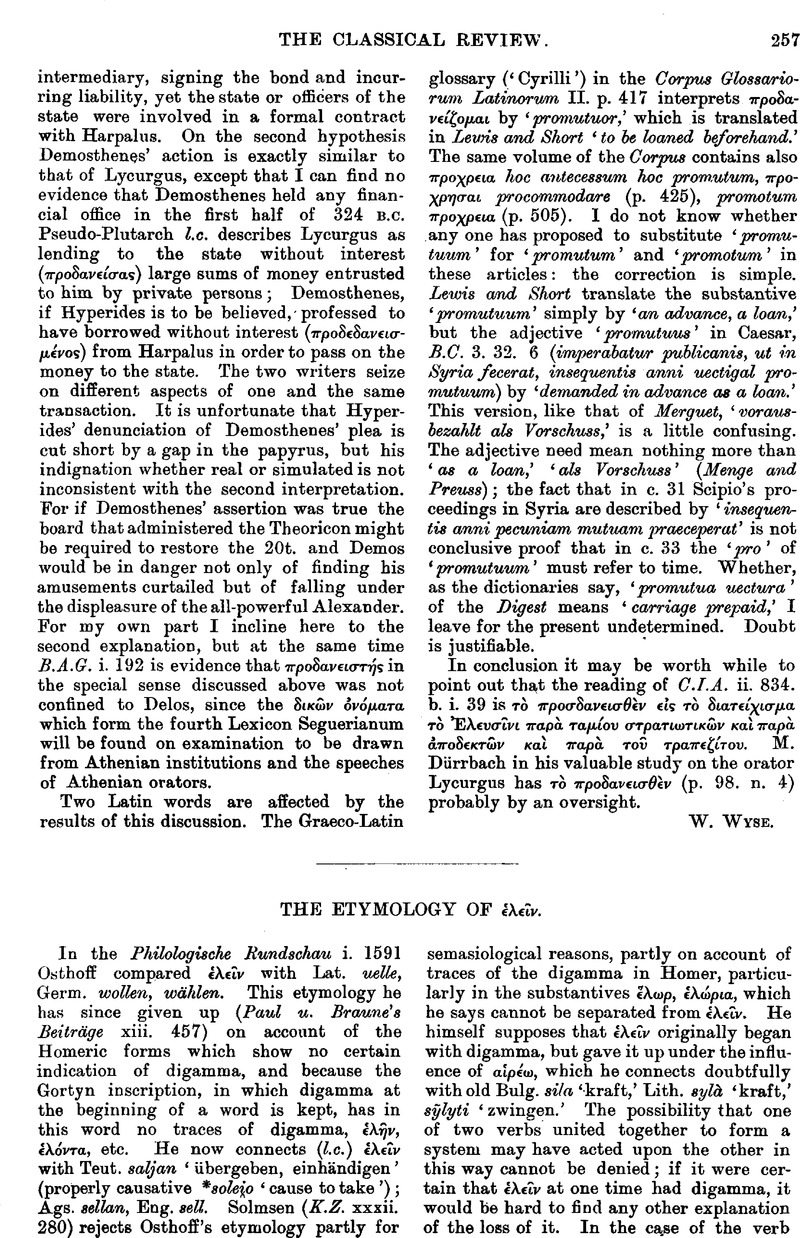No CrossRef data available.
Article contents
Abstract

- Type
- Review Article
- Information
- Copyright
- Copyright © The Classical Association 1892
References
1 This would be impossible if Fick Vgl. Wb.4 i. 552 be right in separating ἕλκω altogether from Lith. vctkù and putting it with Lat. sulcus. But the words agree so closely both in form and in meaning that they can hardly be separated. Brugmann Grundriss i. 147 (cf. also ii. 476) explains the initial of ἕλκω from the influence of ⋯λκ-, δλκ- cognate with sulcus. In that case the shorter Fελ-of F⋯λωρ has remained unaffected. As to the breathing of ἕλωρ no stress can be laid upon it: it is evident that in later times the word survived only as an archaism, and it may very easily have been invested with the rough breathing through association with ⋯λεῖν or ἕλκειν.
2 Before -nāmi a weak form of the root might have been expected. This is probably to be found in tallaim ‘take away, steal’ which can hardly be separated from tellaim,: tallaim might be explained from to-salnami (s-al = sal). By the side of sal- there appeared in certain parts of the verb sel-, and levelling set in in one direction or the other.




